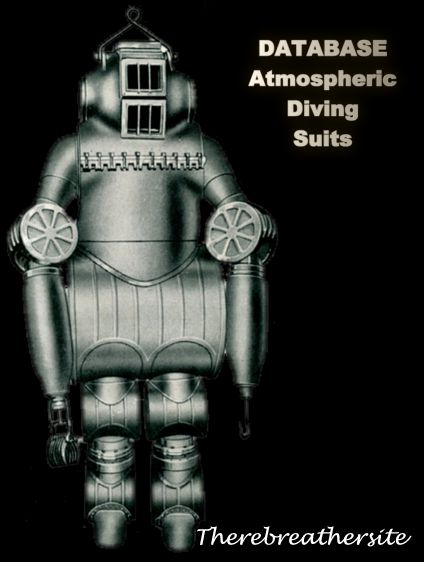
Verena Winifred Holmes (1889–1964), an English mechanical engineer and inventor, the first woman member elected to the Institution of Mechanical Engineers (1924).
Born in 1889 in Ashford, Kent, Verena became a trailblazer for women in the industry as arguably the first female in the UK to have a full-time career as a professional mechanical engineer.
An advocate for women in engineering and dedicated to the development of female engineers, she represented a breakthrough for equal rights in the early 20th century. In 1919 she was a founding member of the Women’s Engineering Society (WES), became the first female member elected to the Institute of Mechanical Engineers (IMechE ) in 1924 and in her own engineering firm, set up in 1946, she employed only women.
As a creative and talented mechanical engineer, Verena’s technical specialities included marine and locomotive engines, diesel and internal combustion engines. She was also a prolific inventor with strong medical links and took out a dozen patents for medical and safety devices and internal combustion engine improvements. Her inventions include a poppet valve for steam locomotives, a rotary valve for internal combustion engines and a pneumo-thorax apparatus for treating patients with tuberculosis. Her engineering firm also created the first practical safety guillotine for paper, making it suitable for introduction into schools. See https://en.wikipedia.org/wiki/Verena_Holmes
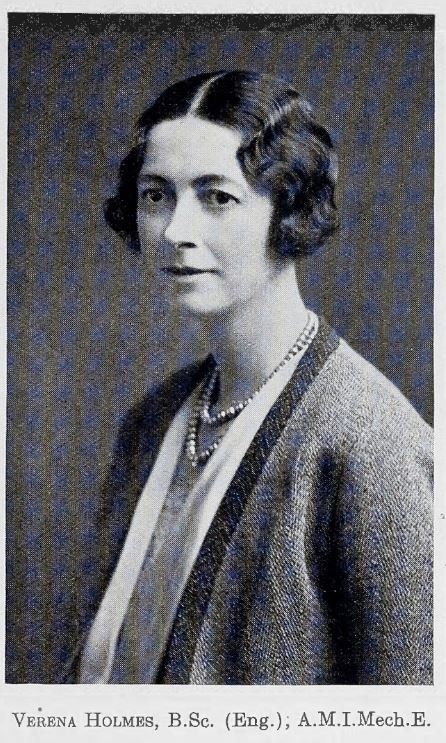
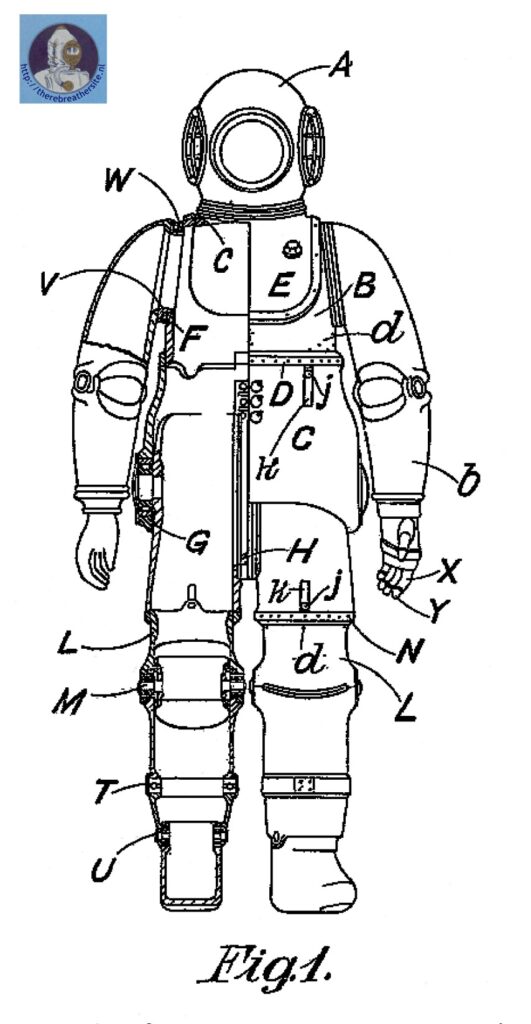

In 1924 Holmes patented her diving Armor, a model with great detail for design.
Holmes, V. W. Nov. 14, 1923 Divers’ suit – In a diver’s suit of the rigid type, made of metal such as an aluminium alloy, the jacket consists of two main parts B C, fig. 1, connected by a sliding telescopic joint D which permits adjustment to the wearer’s height. A push-collar is secured to the jacket by screws which engage in one of a series of rows of threaded holes d. The joint is held together by hydraulic pressure. Water will help to hold the parts together the lugs j protruding through grooves k are provided. The upper part B of the jacket carries a corselet E to which the helmet A is attached and a roller bearing F for the shoulder joint through which the arm can be moved forwards and upwards. The lower part of the suit has hip bearings G of the ball or roller type and a centre bearing H which allows the relative angular movement of the leg elements. The lower leg elements L are attached to the upper leg elements by means of telescopic joints N which are similar to the joint D of the jacket. The knee and elbow joints have the cross-section shown in Fig. 6, the cross-section being such that the centre of gravity is on the hinge axis, while the pivot point is closer to the inside than to the outside of the joint. The limb parts are provided with ball or roller bearings P, and the joint is closed by three arched shields Q, Fig. 4, formed with lips R for connection to each other and to the limbs. The inner shield is rigid with the support pins, and the upper and lower outer shields each have a bearing of less than half a circle on the pins on each side, but are prevented’ from being displaced by blocks S attached to the inner shield. At the ankle there are two separate joints; a thrust bearing T, Fig. 1, which allows rotation about the axis of the leg, and a lower joint U which allows angular rotation of the ankle. A pressure-resistant glove may be used with fingers X (Fig. 3) made of flexible metal tubing with metal thimbles Y. A wrist connection allowing the glove to be pulled off or tightened without turning the hand consists of a ring Z connected to the glove and rotatable to it, which may be screwed into the arm member b. It is preferably made with strong corrugated rubber plates at the joints. Alternatively, large protruding folds of corrugated twill may be provided at the joints and flexible sheet metal may be bent at the ridge of the folds and cut to form a hinge.
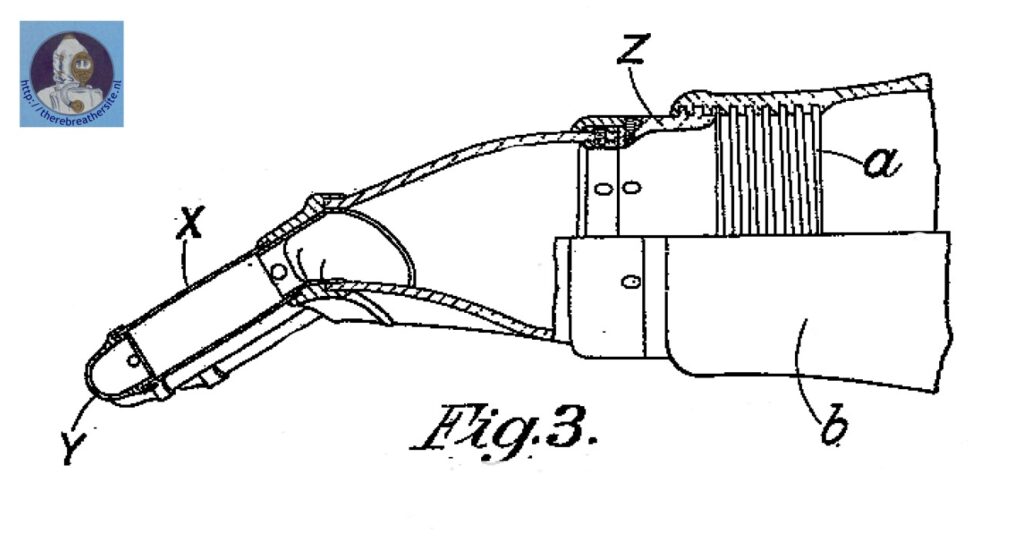
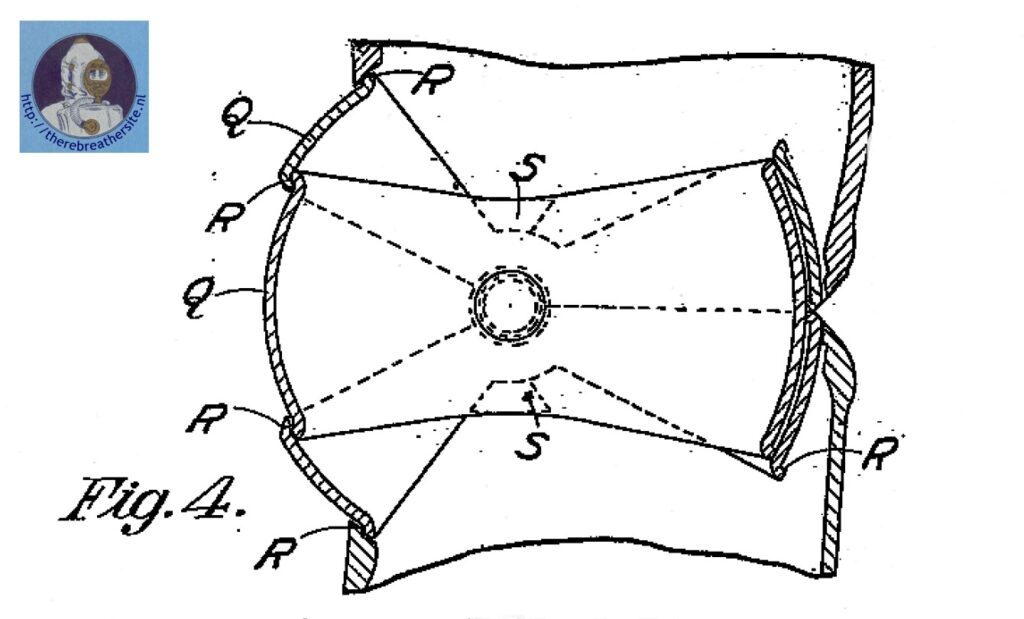



Therebreathersite was founded by Jan Willem Bech in 1999. After a diving career of many years, he decided to start technical diving in 1999. He immediately noticed that at that time there was almost no website that contained the history of closed breathing systems. The start for the website led to a huge collection that offered about 1,300 pages of information until 2019. In 2019, a fresh start was made with the website now freely available online for everyone. Therebreathersite is a source of information for divers, researchers, technicians and students. I hope you enjoy browsing the content!
